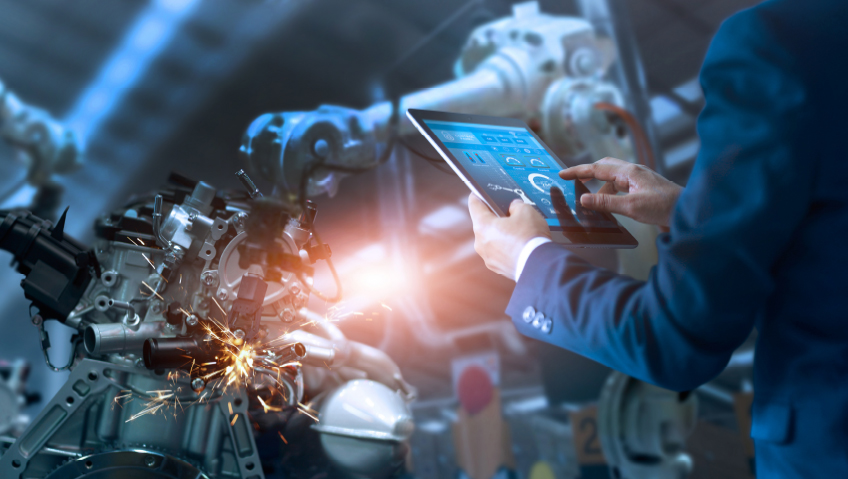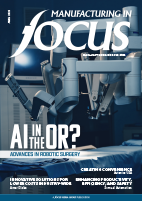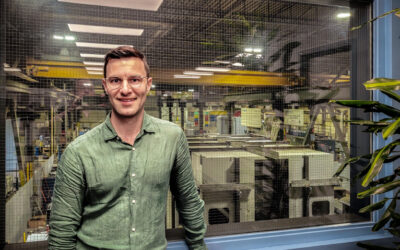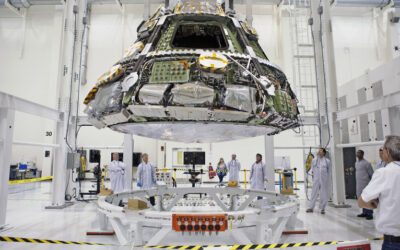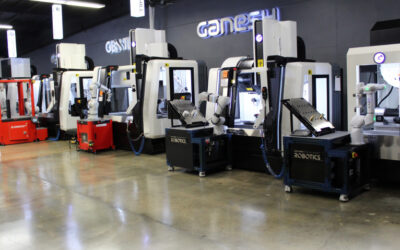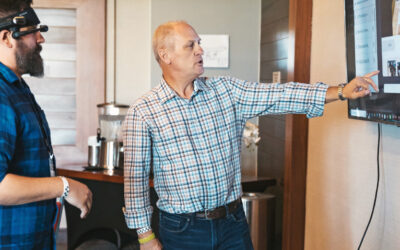Heads up! The future is robotic, especially when it comes to Industry 4.0. Not the chatty Star Wars type robot or the antagonistic HAL 9000 from 2001: A Space Odyssey, but smart machines doing repetitive, precision or dangerous work – operated remotely by human voice command, touchscreen or joystick. The next generation of skilled workers, in fact, may be technicians who program and manage robotic equipment to undertake difficult or routine tasks, transforming manufacturing and other sectors.
New technology is already on target to solving many of the anticipated skilled trade shortages. And the next generation of smart-bots will be smaller and more collaborative than the monolithic mechanical arms we’re accustomed to seeing in large industrial settings. These new smart-bots will be designed to work side by side with human operators, with their speed and dependability ultimately reducing cycle time and maximizing throughput.
Maximizing efficiency
Familiar examples like Amazon, Nike and Adidas aren’t the only success stories in smart manufacturing. Large and small manufacturers are seeing strong returns on their investments in new robotic technology. With digitization, workers are able to reprogram Siemens’ factory machinery, for example, in about one minute, instead of two hours. The rollout time of new products can be cut by 25 to 50 percent, and engineering costs can be reduced by 30 percent.
Ocado, one of the largest online-only grocery delivery companies in the U.K., has heavily automated warehouses with robotic arms for picking and packing produce and shifting boxes. The company is now developing robots to work alongside humans to learn and predict employee needs and actions.
The family-founded Mennie’s Machine Company in Illinois, a subcontract manufacturer for heavy construction and off-road equipment, has launched a robotic system linked through a conveyor belt to turn raw parts into finished products that undergo drilling, heat treatments and customization, depending on the request. Production costs have been cut by about 35 percent, and the system can be switched to manual production for routine maintenance.
Digitization brings the handling of data and knowledge to the forefront, all the way from the supplier through material prep, assembly, packaging and shipment to the customer. Research by Capgemini consultants says that smart factories will give a $500 billion boost to the global economy by 2022, powered by collaborative robots, augmented reality components and predictive maintenance. These elements all work to boost productivity and flexibility while lowering operating costs.
As all facets of the economy face a talent shortage and increased competition for scarce, skilled workers, automation won’t be about reducing workforces but instead will be a necessity to ensure that integral tasks are being accomplished. In fact, most organizations that have embraced automation have indicated that the objectives are not to replace people but to increase the effectiveness, efficiency and safety of workers. The focus is still a people-first approach. Robots can be programmed to do work that makes manual labour safer, and remote-controlled devices can be manipulated to keep human operators a safe distance from potentially dangerous environments.
Supporting worker safety
Welding, for example, is an in-demand trade. But it’s also fraught with safety hazards. The heat necessary for a weld is intense. Hot metal spatter and sparks can cause severe burns and ignite materials like clothing, despite safety measures. Even with protective eyewear, welders with their heads too close to the arc to see through the smoke and glare often develop a painful condition called welder’s flash. This can lead to tearing eyes, light sensitivity and even permanent retinal damage.
Consider settings where access to the parts to be welded are in hazardous locations or otherwise hard to access. Some robots have been specifically developed with slender arms to reach into small spaces where traditional welding operations simply won’t work.
Robotic welding results in less time and material waste compared to manual welding operations. Robotic welders can move from one weld to the next much more quickly and precisely, so there’s less reworking of material. These machines don’t require breaks and they’re oblivious to the heat, sparks, glare and fumes, which makes them more efficient while potentially reducing insurance costs and lost time due to injuries.
Another challenge facing welders, and skilled trades in general, is the aging workforce. The American Welding Society says the welder shortage will reach a deficit of 400,000 workers by as early as 2024. Older welders are reaching retirement age and younger welders aren’t replacing them fast enough. In fact, the average age of a welder is 55, and fewer than 20 percent are under the age of 35.
A new generation
No population has more to gain from this change of demographics than millennials. Millennials crave jobs with the opportunity for creativity and opportunities for advancement which will also allow them to hone and develop new, future-forward skills. This well-educated generation will forsake jobs offering fewer opportunities for advancement or jobs that can’t provide training for new technical skills. Their comfort zone, not surprisingly, is all about web tools, rapidly evolving technology, and Big Data.
“Millennials are one of the key drivers of job automation,” human resource futurist Rick Von Feldt told Rework magazine. “Just because technology is more advanced and more available doesn’t mean it’s the single cause of the robot revolution. There are many factors driving companies to adopt technology to assist with or take over certain tasks – including cultural influences, like the fact that millennials don’t want to do work that can be automated.”
The robot market, which is small today, is anticipated to grow exponentially over the next five years as employers are faced with the reality of an aging workforce combined with an ever-pitched battle to lure and retain top talent. As tasks that were once completed manually become more automated, organizations can focus employees on more valuable or rewarding tasks.
“Collaborative robots – or cobots – are the friendly face of workplace automation – not here to steal away our jobs, but to work alongside us, providing timely advice or simply mechanical muscle at times we need it,” Forbes reports.
Diverse applications
Indeed, welding is just one example of where robotics is enhancing production. Robots are appearing in many locations, from restaurants to surgical operating rooms and warehouses.
Robots capable of picking and packing warehouse items are being regularly deployed. Back injuries, and reaching or falling injuries associated with this kind of labour, are things of the past for these smart machines. Robots excel at mundane and repetitious tasks but don’t fare so well where emotional intelligence or decision-making is required.
This is where robots will continue to rely on human counterparts working in tandem. Although there is fear that robots will replace human workers, the reality is they will more likely work alongside human operators who will oversee their tasks. That means anywhere jobs are repetitive, physical robots could be adept at these tasks.
In the food industry, robots can flip thousands of burgers every day in an environment that is hot, smoky and potentially dangerous. Robots are well suited to these adverse situations, never tiring and free of repetitive motion injuries or burns caused by grease.
Interestingly, robots are also showing up in healthcare where they are providing surgeons with enhanced control and superior vision. Multiarmed robots can make numerous small incisions and do so with exacting precision, allowing surgeons to work faster and with less stress on the patient incurred by longer or deeper incisions. This reduces the potential for infection and promotes faster healing. Laser eye surgery, for one, partners robots and automation to make multiple and complex incisions.
A world of possibilities
The days of robots only working with other robots is in the past. Robots will become more and more present in many of our day-to-day interactions. Can you remember what life was like before virtual assistants like Siri who schedule our lives, make recommendations and answer questions on demand?
The recent COVID-19 pandemic is a key example of where frontline workers might one day be replaced with robots which could monitor the body temperature of a patient, provide maintenance and sanitization to patient’s room, and deliver medication – all without risk of infection.
Robots would be able to replace cashiers at grocery stores, not only cashing out the customer but also packing bags and stocking shelves – all, again without the worries of contamination.
As technology and AI continue to develop at rapid speed, the possibilities of robotic applications are wide open.
As Jeff Bezos, founder of Amazon, predicts: “Because of artificial intelligence and its ability to automate certain tasks that in the past were impossible to automate, not only will we have a much wealthier civilization, but the quality of work will go up very significantly and a higher fraction of people will have callings and careers relative to today.”

